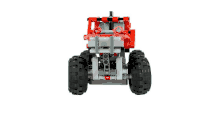Packshot
A packshot (also pack shot) is a still or moving image of a product, usually including its packaging and labeling, used to portray the product's reputation in advertising or other media. It is an important stimulus to sales, with the goal of triggering in-store, on-shelf product recognition.[1][2] The term packshot also refers to product placement in a movie or television show.[3] Packshots often dominate television commercials, taking from two to five seconds of a thirty-second commercial.[4] Forged or leaked packshots for unreleased products have led to controversy or increased interest in the product.[5][6] Packshots can be a simple photograph of the product on a white background or can entail the use of elaborate props. Products sold as digital downloads, such as software, sometimes have digitally generated packshots when no physical product or packaging exists.[7][8]
There are a few goals that good packshot must have. First of all, the photographed product should be centered in the picture and almost fit the canvas. All letters and captions on the product must be legible. The company logo and brand should be exposed centrally. Lighting should be set very precisely, because it should provide a 3-dimensional perspective of the photographed object. Colours should be rendered in its natural tones.
Making packshots combines elements of aesthetics, art and technique.
Consumers see ready images that are perfect, but they should keep in mind that the end effect is achieved through techniques and preparations.
Packshots can be produced manually by photographers or by machines.[9]
In the first case a professional photographer is needed, because only a professional can set lighting, focus, camera parameters, etc. Post-processing is often required. Unprocessed photographs from a camera can rarely be added directly to a website or web store. In most cases the photographer must correct the image, change colours, make amendments, remove the background, and add shades. A photographic studio is required to make these photographs, because working conditions must be very good.

In the end, ready photographs can be presented to the end user. There are a few possibilities. The user may browse a gallery containing static images of the product, shown from different angles. A second possibility is 360-degree view. In this case the user can spin the product around X and Y axes. A higher possibilities would be a 3D view, where the user can see the product and spin it in three dimensions.
The whole process is a bit complicated and time-consuming, but thanks to this, the user can see the product as it really is. A packshot can offer great impressions to potential buyers. In e-commerce business it is a very important aspect of product presentation. If the product is well-presented to the end user with all the details (deep colours, real shape, perspective view) and features, then the numbers of returns and complaints will decrease. Good packshots can be profitable to e-commerce and business owners, and are useful to customers.
References
- Baker, Mike (2004-07-01). "Further steady growth points to healthy future for great outdoors; influential sectors are throwing their considerable advertising weight behind the rising profile of outdoor media and aiding growth". Marketing Week. Retrieved 2009-02-19.
Outdoor also suits highly competitive sectors in which a brand name-check, visual image or product packshot are important stimuli to a sale
- Bullmore, Jeremy (2004-04-16). "On the Campaign Couchlose-Up: On the Campaign Couch ... with JB". Haymarket Business Publications. Retrieved 2009-02-19.
The function of the pack shot is to trigger what marketing persons like to call in-store, on-shelf recognition.
- "Claire Beale on Advertising". The Independent. London. 27 November 2006. Retrieved 2009-02-19.
If no money changes hands and the pack shots are handled appropriately, the proliferation of well known brand names in TV shows is deemed to be a legitimate part of the programme-making process.
- Bouville, Nathalie (2006-02-24). "If there was one thing you could change about TV beauty ads, what would it be?". Paris: Communications International Group. Retrieved 2009-02-19.
Also, packshots are very dominant, sometimes there are two, five second shots in a 30 second commercial
- Stokes, Ted. "Left 4 Dead". Retrieved 2009-02-19.
- "Call of Duty 5 Pack Shots Leaked?". 2008-06-16. Retrieved 2009-02-19.
- "Box Shot 3D". Retrieved 24 March 2013.
- "TrueBoxShot". Retrieved 24 March 2013.
- "Automated Photography Solution". Automated Photography System. Retrieved 9 September 2016.